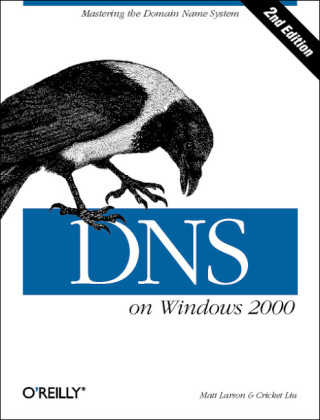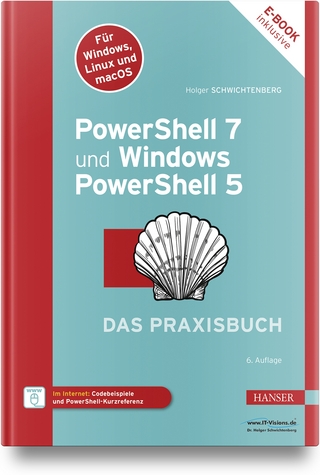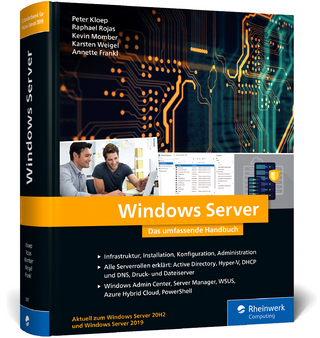
DNS on Windows 2000
O'Reilly Media (Verlag)
978-0-596-00230-5 (ISBN)
- Titel ist leider vergriffen;
keine Neuauflage - Artikel merken
Matt Larson started Acme Byte & Wire, a company specializing in DNS consulting and training, with Cricket Liu in January 1997. Network Solutions acquired Acme in June 2000, and later the same day merged with VeriSign. Previously, Matt worked for Hewlett-Packard, first as Cricket's successor as hp.com's host master, and then as a consultant in HP's Professional Services Organization. Cricket Liu joined Hewlett-Packard after college and worked for HP for nine years. He was host master at hp.com for over three years, and then joined HP's Professional Services Organization to found HP's Internet consulting program. Cricket was Director of DNS product management for VeriSignGlobal Registry Services and is now an independent consultant, assisting corporations with all aspects of DNS management.
Preface. 1. Background A (Very) Brief History of the Internet On the Internet and Internets The Domain Name System, in a Nutshell The History of the Microsoft DNS Server Must I Use DNS? 2. How Does DNS Work? The Domain Namespace The Internet Domain Namespace Delegation Name Servers and Zones Resolvers Resolution Caching. 3. Where Do I Start? Which Name Server? Choosing a Domain Name. 4. Setting Up the Microsoft DNS Server Our Zone The DNS Console Setting Up DNS Data Running a Primary Master Name Server Running a Slave Name Server Adding More Zones DNS Properties What Next? 5. DNS and Electronic Mail MX Records Adding MX Records with the DNS Console What's a Mail Exchanger, Again? The MX Algorithm DNS and Exchange. 6. Configuring Hosts The Resolver Resolver Configuration Advanced Resolver Features Other Windows Resolvers Sample Resolver Configurations. 7. Maintaining the Microsoft DNS Server What About Signals? Logging Updating Zone Data Zone Data File Controls. 8. Growing Your Domain How Many Name Servers? Adding More Name Servers Registering Name Servers Changing TTLs Planning for Disasters Coping with Disaster. 9. Parenting When to Become a Parent How Many Children? What to Name Your Children How to Become a Parent: Creating Subdomains Subdomains of in-addr.arpa Domains Good Parenting Managing the Transition to Subdomains The Life of a Parent. 10. Advanced Features and Security DNS NOTIFY (Zone Change Notification) WINS Linkage System Tuning Name Server Address Sorting Building Up a Large Sitewide Cache with Forwarders A More Restricted Name Server A Nonrecursive Name Server Securing Your Name Server. 11. New DNS Features in Windows 2000 Active Directory Dynamic Update Aging and Scavenging Incremental Zone Transfer Unicode Character Support 12. nslookup Is nslookup a Good Tool? Interactive Versus Noninteractive Option Settings Avoiding the Search List Common Tasks Less-Common Tasks Troubleshooting nslookup Problems Best of the Net 13. Troubleshooting DNS Is DNS Really Your Problem? Checking the Cache Potential Problem List Interoperability Problems Problem Symptoms. 14. Miscellaneous Using CNAME Records Wildcards A Limitation of MX Records DNS and Internet Firewalls Dial-up Connections Network Names and Numbers Additional Resource Records A. DNS Message Format and Resource Records B. Installing the DNS Server from CD-ROM C. Converting from BIND to the Microsoft DNS Server D. Top-Level Domains. Index
| Erscheint lt. Verlag | 23.10.2001 |
|---|---|
| Verlagsort | Sebastopol |
| Sprache | englisch |
| Einbandart | kartoniert |
| Themenwelt | Informatik ► Betriebssysteme / Server ► Windows |
| Informatik ► Betriebssysteme / Server ► Windows Server | |
| Mathematik / Informatik ► Informatik ► Web / Internet | |
| ISBN-10 | 0-596-00230-0 / 0596002300 |
| ISBN-13 | 978-0-596-00230-5 / 9780596002305 |
| Zustand | Neuware |
| Haben Sie eine Frage zum Produkt? |
aus dem Bereich


